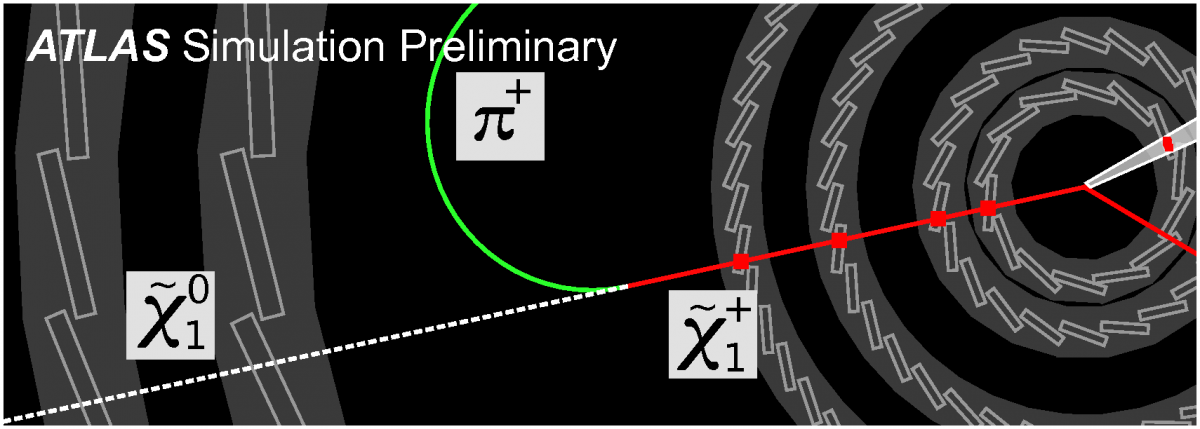Quest for the lost arc
21 March 2017 | By

Nature has surprised physicists many times in history and certainly will do so again. Therefore, physicists have to keep an open mind when searching for phenomena beyond the Standard Model.
Some theories predict the existence of new particles that live for a very short time. These particles would decay to known particles that interact with the sophisticated “eyes” of the ATLAS detector. However, this may not be the case. An increasingly popular alternative is that some of these new particles may have masses very close to each other, and would thus travel some distance before decaying. This allows for the intriguing possibility of directly observing a new type of particle with the ATLAS experiment, rather than reconstructing it via its decay products as physicists do for example for the Higgs boson.

An attractive scenario predicts the existence of a new electrically charged particle, a chargino (χ1±), that may live long enough to travel a few tens of centimetres before decaying to an invisible neutral weakly interacting particle, a neutralino (χ10). A charged pion would also be produced in the decay but, due to the very similar mass of the chargino and the neutralino, its energy would not be enough for it to be detected. As shown in Figure 1, simulations predict a quite spectacular signature of a charged particle “disappearing” due to the undetected decay products.
ATLAS physicists have developed dedicated algorithms to directly observe charged particles travelling as little as 12 centimetres from their origin. Thanks to the new Insertable B-Layer, these algorithms show improved performance reconstructing such charged particles that do not live long enough to interact with other ATLAS detector systems. So far, the abundance and properties of the observed particles are in agreement with what is expected from known background processes.
New results presented at the Moriond Electroweak conference set very stringent limits on what mass such particles may have, if they exist. These limits severely constrain one important type of Supersymmetry dark matter. Although no new particle has been observed, ATLAS physicists continue the search for this “lost arc”. Stay tuned!
Links:
- Search for long-lived charginos based on a disappearing-track signature in proton-proton collisions at 13 TeV with the ATLAS detector (ATLAS-CONF-2017-017)
- Presentation at Moriond Electroweak Conference by Toshiaki Kaji: "Search for winos using a disappearing track signature in ATLAS"
- See also the full lists of ATLAS Conference Notes and ATLAS Physics Papers



